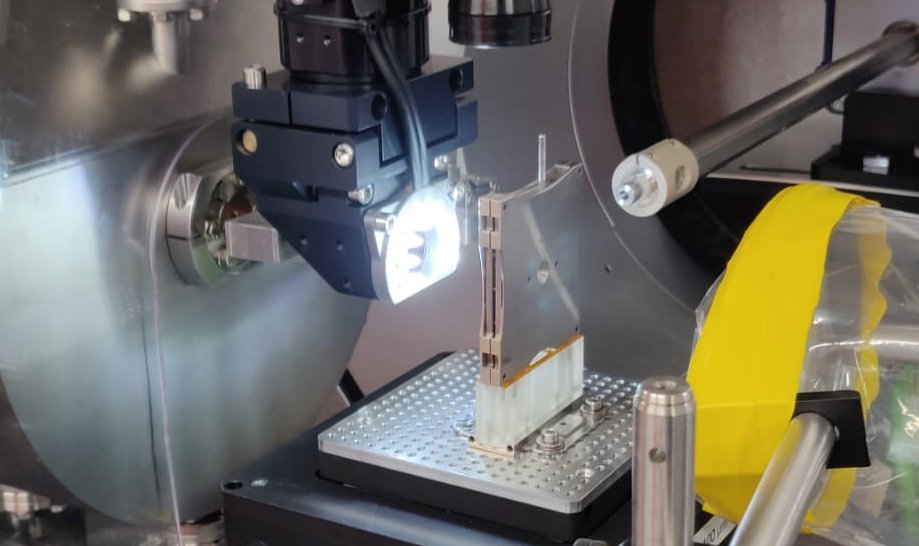At the Diffraction Station, samples are mounted in air and at room temperature. We have a few standard sample holders for various measurement types. Any other sample support that is compatible with our sample scanner can be used. If a different sample support is needed, contact the beamline staff before proposal submission or well in advance of an approved experiment.
There is also room for sample environments. At this moment there are NO standard beamline provided sample environments. However, plenty of user provided sample environments have been used in the past at NanoMAX. Further below we show various examples of such user provided sample environments. If you intend to bring and use your own sample environment, contact the beamline staff to discuss feasibility before submitting a proposal. If you are in need to a specific sample environment, but don’t have one, also contact the beamline staff, as we can connect you to previous users that might have a suitable instrument.
Standard Sample Holders
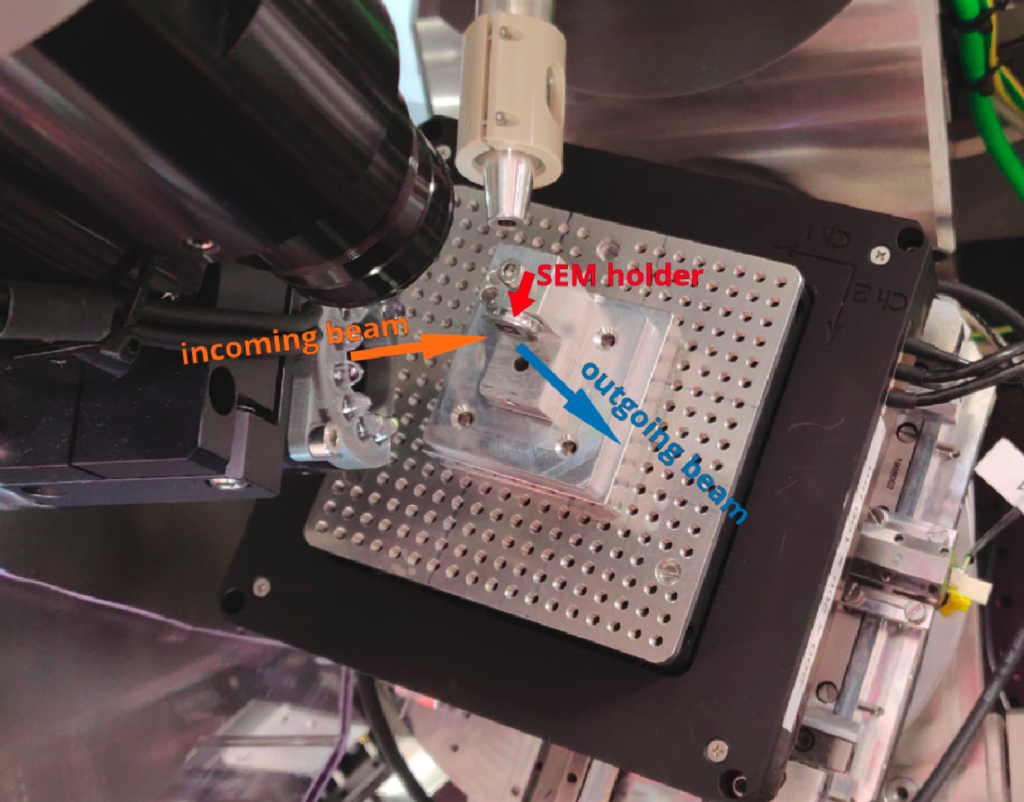
For measurements in the reflection geometry, standard SEM specimen holders (12.7 mm diameter with 3.2 mm pins) are provided.
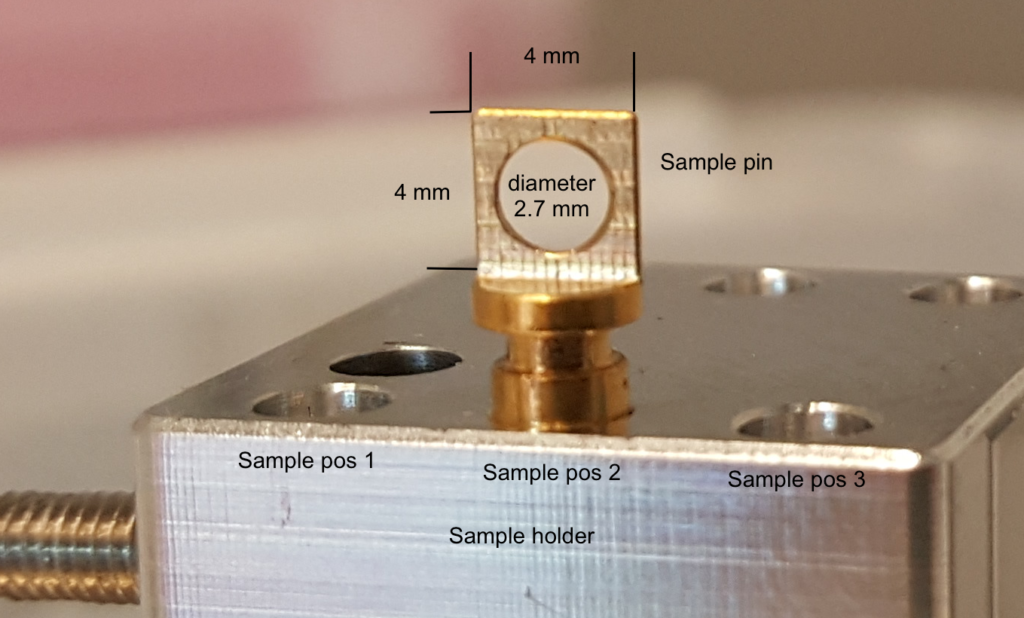
For transmission geometry measurements two types of standard holders are being used at NanoMAX. The first, OMNY pins, can be used at both the diffraction and the imaging endstation. Some other beamlines around the world use the same sample pins. We offer flat versions with either a 4×4 mm or a 5×5 mm mounting area. There are also point versions for tomography experiments. The holders are either made from copper (coated with gold) or made from aluminum (not coated).
A reasonable amount of sample holders can be provided by the beamline (staff) for your experiment.
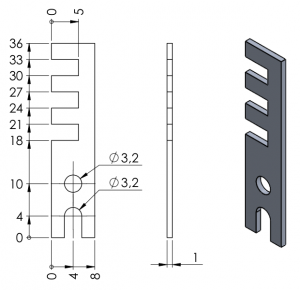
The second option for measuring samples in transmission geometry is a NanoMAX specific solution. These flat holders (“type B”) are made from Aluminum and allow for mounting up to three samples in three groves on the top half of the holder. Due to this grove, these sample holders are well suited for X-ray fluorescence measurements (less background from the holder).
User Provided Sample Environments
As mentioned above, light and compact sample environments may be accommodated if it they are provided by the user group and the feasibility has been checked by the beamline staff prior to proposal submission. The rough requirements for a sample environment to be considered are: maximum size roughly that of a tennis ball (smaller is better); maximum of 2 kg (much lighter is much better); safe to use; no thick stiff cables/hoses/tubes that would exert force on the piezo scanning stage. The details always differ from case to case. Make sure to discuss your requirements with the beamline staff.
Examples of user provided sample environments used at NanoMAX in the past are shown below:
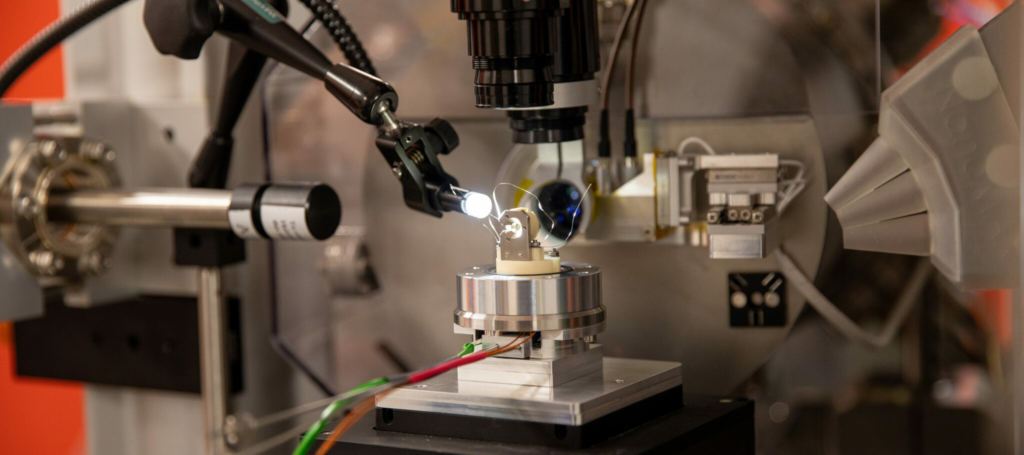
This sample heater allowed studying temperature-dependent phase transitions.
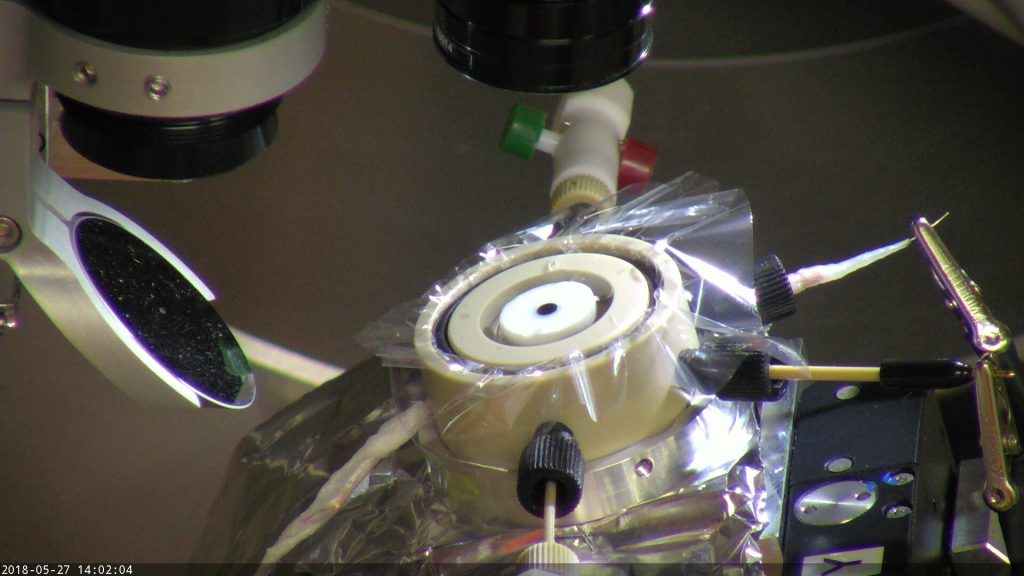
This light and compact cell did allow for coherent Bragg imaging under electrochemical conditions.
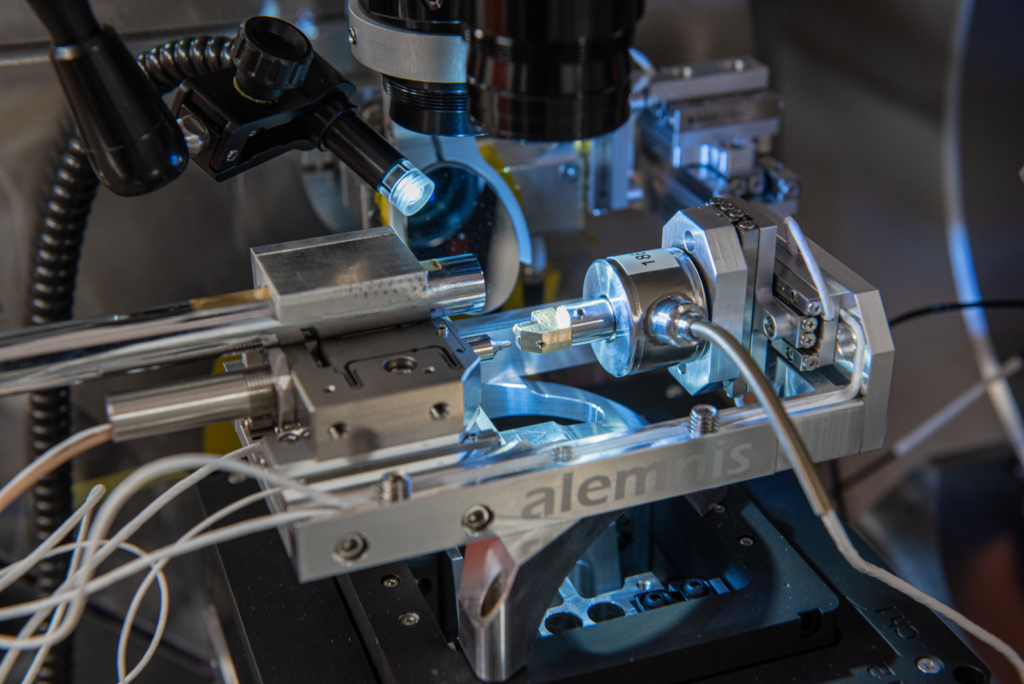
This nanoindenter allowed for in situ nano-diffraction experiments while a push or pull force is acting on the sample.
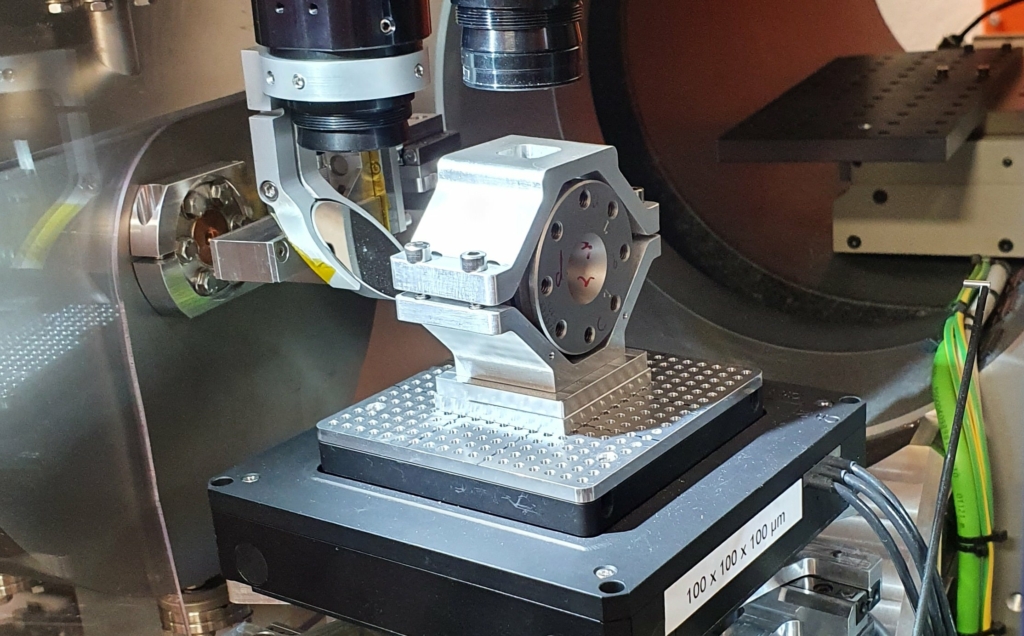
This holder allowed to mount diamond anvil cells (DACs) which facilitated measuring diffraction from sub-micron crystallites under extreme pressure.
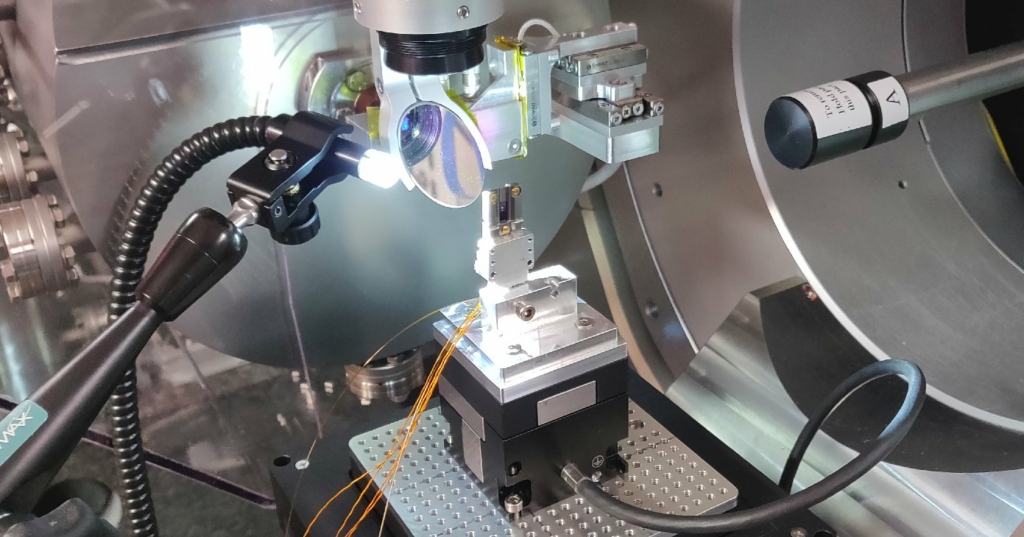
This nano-reactor based on commercial MEMS chips allowed for in situ measurements in transmission geometry while the (small) sample could be heated and the atmosphere the sample was in could be controlled.
References: 1
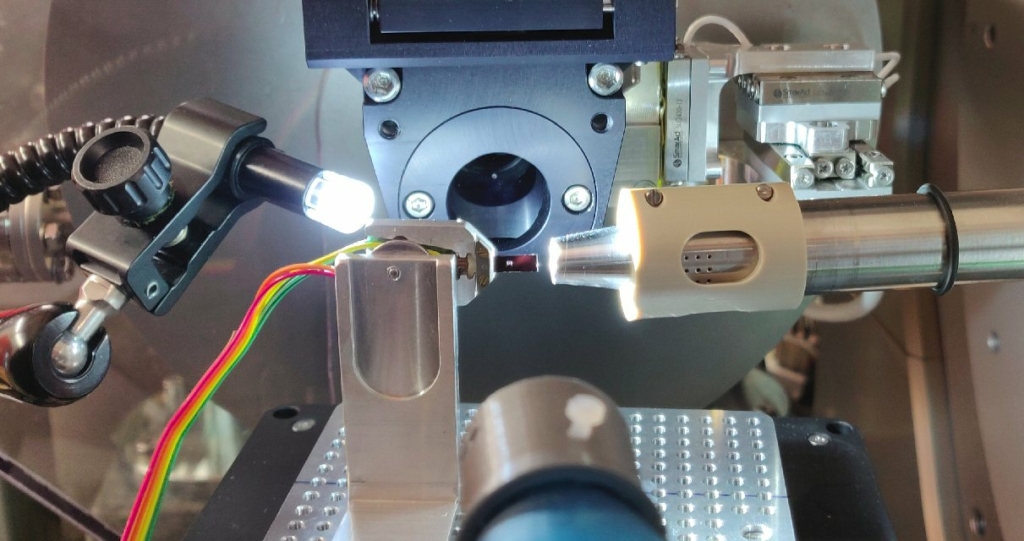
This design, also based on commercial MEMS chips, allows to heat the (small) sample in ambient atmosphere and allows for measurements in transmission geometry as well as simultaneous XRF measurements.
device from DTU Energy and DTU Nanolab
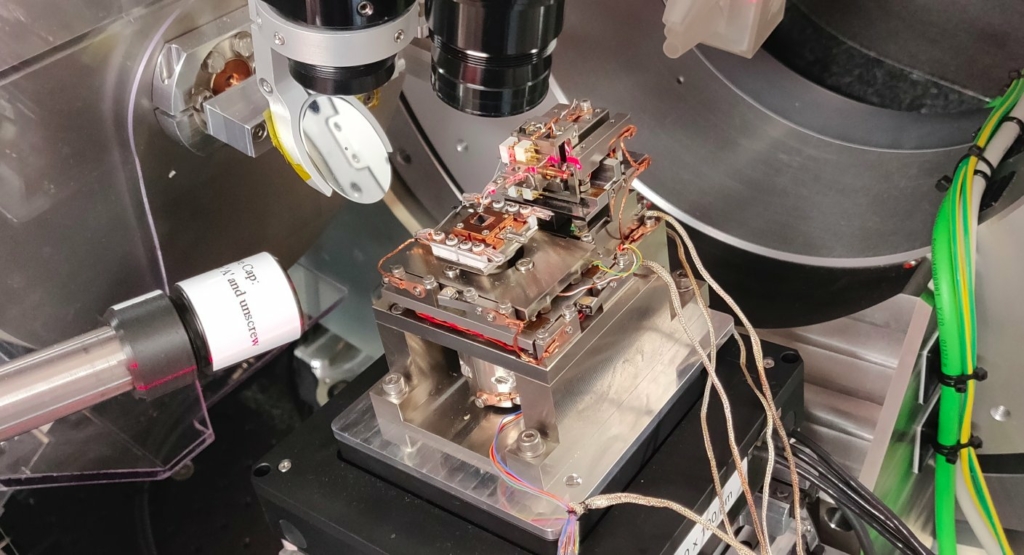
In this example a small AFM / STM setup was mounted on top of the piezo scanner. It allowed for parallel X-ray measurements in reflection geometry.
